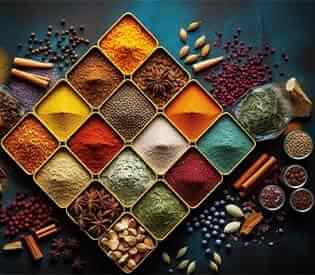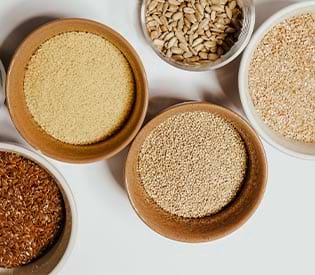Wild Yam Root
📦🚚 Fast & Free shipping on all orders
What is wild yam?
Dioscorea villosa is the name of a plant that grows in parts of North America, Mexico, and Asia. The root and bulb have been used for many years in traditional medicine. Wild yam is also called American yam, Chinese yam, colic root, devil's bone, four-leaf yam, Mexican yam, rheumatism root, shan yao, and yuma.Studies done more recently found that wild yam has a chemical called diosgenin, which has been shown to have many health benefits. This chemical, which has also been called a phytosteroid, is said to be like the steroids that our bodies make naturally. It is also thought to have weak effects similar to oestrogen, which is why it is often used as a natural menopause treatment. The diosgenin in wild yam is used to make steroids like progesterone, cortisone, and dehydroepiandrosterone, which are used in medicine.People think that the versions of diosgenin found in wild yams have the same benefits as steroids made in a lab. Wild yam can be taken as a supplement, or you can buy a cream that you rub on your skin.
How do I use wild yam?
Additionally, wild yam is employed in the treatment of diverticulosis, an intestinal disorder, biliary discomfort, rheumatoid arthritis, and vitality enhancement. Some women use wild yam lotions to treat menopausal symptoms like heat flashes.
Wild yam benefits:
Often sold as a skin cream, wild yam root is also available as a supplement. People have long used it to treat hormonal problems like menopause and PMS, as well as to ease the pain of arthritis.
◉ Potentially Regulates Blood Sugar: According to the U.S. National Library of Medicine, wild yam may help control blood sugar. This is thought to be because of a chemical called dioscoretine, which has helped in studies. Researchers at the University of Nigeria's Phytotherapy Research Laboratory found that diabetic rabbits' blood sugar went down when they were given dioscoretine that had been taken from tubers.
◉ Improves Cholesterol Levels: A study published in the Journal of Lipid Research suggests that the diosgenin in wild yam may help raise the "good" HDL cholesterol and lower the "bad" LDL cholesterol. The study fed wild yam to rats for a week to investigate if diosgenin prevents the body from absorbing cholesterol. The HDL-to-LDL ratio of the rats was better than that of the other rats. Another study done on mice and rats suggests that wild yam supplements may help control high cholesterol levels.
◉ Menopause: In alternative medicine, wild yam root cream is most often used instead of estrogen replacement therapy to treat menopause symptoms like night sweats and hot flashes. However, there isn't much evidence to show that it works. In fact, one of the few studies that were done found that 23 women who used wild yam root cream every day for 3 months had no change in their menopause symptoms.
◉ Skin health: Wild yam root is often used in anti-aging creams for the skin. In a test-tube study, it was found that diosgenin may help new skin cells grow, which could slow the aging process. But there isn't much research on wild yam root as a whole. Researchers have also investigated the potential depigmenting effect of diosgenin. If you spend too much time in the sun, you may get small, flat, brown or tan spots on your skin. The condition is called hyperpigmentation and is harmless, but some people don't like it. However, studies have not demonstrated the effectiveness of wild yam root creams for this purpose.
Where do I buy wild yam?
Buy wild yam from the health food store in the USA, Alive Herbals.
Wild Yam information (at a glance):
| Product Name | Wild Yam. |
| Scientific Name | Dioscorea villosa. |
| Country of Origin |
It is native to North America and China. |
| Ingredient |
Wild Yam Root. |
| Taste and Aroma |
Bitter, astringent. |
| Shelf Life and Storage |
Shelf life is about 6–24 months. Store it in an airtight container in a cool, dry place and prevent sunlight exposure. |
| Precautions |
We requested you, Before consuming spices, herbs, teas or any kind of natural products you consult an expert qualified healthcare practitioner or herbalist. |
| Note | This product information has not been appraised by the Food and Drug Administration (FDA). This information is solely intended for educational purposes. |







